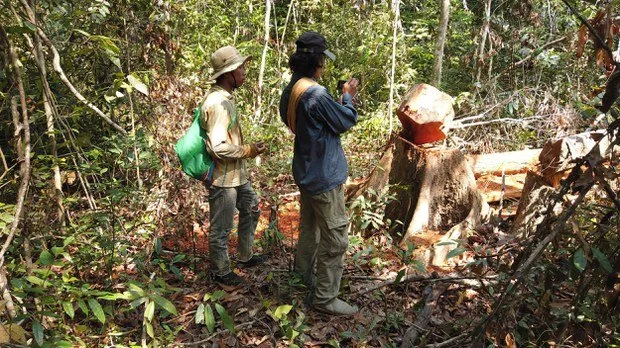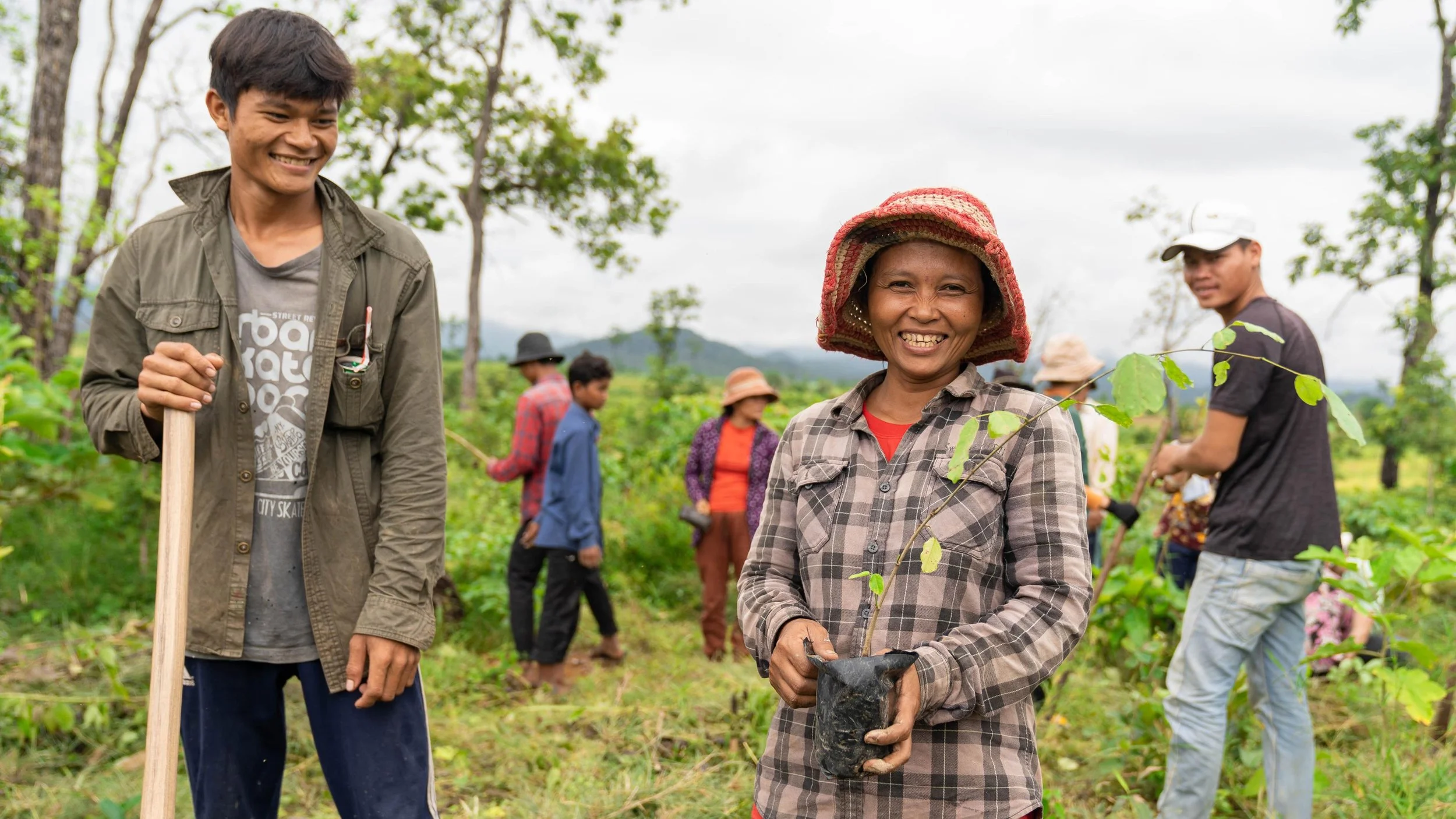Raising over 500,000 U.S. dollars worth of funding, we initiated model projects in Cambodia that would convert waste materials into clean energy at a rural village in Cambodia. It’s estimated that hundreds of households and thousands of people around the area will be benefited directly from the project.
Cambodia is a country in Southeast Asia that has faced numerous environmental and living challenges in recent years. The country has a rich cultural history, but it has also been plagued by war, poverty, and environmental degradation. These issues have had a detrimental impact on the quality of life for many Cambodians and threaten the sustainability of the country's natural resources.
One of the most pressing environmental problems in Cambodia is deforestation. The country has lost a significant portion of its forest cover due to illegal logging and clear-cutting for agriculture. This has led to soil erosion, loss of biodiversity, and a decline in the quality of water resources. It also contributes to the country's vulnerability to climate change.
Another significant environmental challenge in Cambodia is pollution. The country's rapid economic development has led to an increase in industrial activities, which has resulted in the release of harmful chemicals and pollutants into the air and water. This has had a detrimental impact on the health of local communities and the natural environment.
In addition to these environmental issues, Cambodia also faces significant living challenges. The country has a high poverty rate, with many people living in overcrowded and unsanitary conditions. This has led to a lack of access to basic necessities such as clean water, sanitation, and healthcare. This has particularly affected the rural areas, where many people live in poverty and lack access to basic services.
Furthermore, Cambodia has a large population of internally displaced persons and refugees, many of whom live in overcrowded and inadequate housing conditions. This has led to poor living conditions and a lack of access to basic services, which has further exacerbated the country's environmental and living challenges.
A context
Cambodia, a country in Southeast Asia, has a population of 17 million people at the growth of 1.4% (2021), of which, 75.8% live in the rural area, and 17.8 percent live under the world poverty rate at USD 2.7 per day. The United Nations included Cambodia as the Least Developed Country (LDC) in 1975 and assumed its graduation in 2027 when it met the criteria for the first time in 2021. According to UN Triennial review dataset 2021, Cambodia has a share of agriculture, forestry of fisheries in its economy at 23.5%, environmental vulnerability 31.9%, agricultural instability 11, victims of disasters 5.56%, health index 74, education index 74.6, gender parity index for gross secondary school 1.11, GNI per capita USD 1,377, and the highest poverty rate of the country is in the rural areas at 22.8%.
The Government’s “Rectangular Strategy” focusing on accelerating agricultural development, strengthening infrastructure construction and attracting investment and human resources have achieved remarkable results owing to its strategic plan. The Government’s support package, known as cash transfer program, has helped mitigate negative impacts on poor and vulnerable households. According to FAOSTAT, during 1990-2019, the Gross Production Index Number (2014-2016=100) of Agriculture of Cambodia has increased from 26.9 to 112.8, Export Value of Agricultural Products of the country has grown from USD 37,661,000 to 930,897,000.
However, Rapid growth of agriculture has brought about hazardous impacts on the vulnerable environment, leaving the organic animal waste and crop straw unused and polluting to the environment. The Annual CH4 emission of agri-food systems waste rose from 11.7 kilo tons in 1990 to 56.9 kilo tons in 2019. The burden from energy and food price rise keeps on slowing the pace of poverty reduction. The World Bank affirmed in the report of Cambodia Economic Update in June 2022, despite Cambodia’s slight economic growth of 4.5% in 2022, global food and oil price shocks due to the Russia-Ukraine conflict which has exacerbated inflationary pressures and weighed on household budgets and consumption. The increases in oil and food prices also started to affect agricultural production in the country, as the prices of fertilizer and pesticide have increased.
More targeted social assistance should be provided to Cambodia that directly mitigates the impacts on vulnerable households, poor farmers, and village communities for the Better Life and Better Environment.
Our response
In Cambodia, there is a great need for clean energy for reasons including 1) Foraging and usage of biomass for fire lead to deforestation, water loss, and soil erosion and gives overburdened work to women and children; 2) The country is facing cooking fuel deficit and has limited access to modern energy, especially in rural areas; 3) Agricultural waste left untreated causes environmental pollution, climate change, and animal-human disease transmission; 4) Most rural households depends predominantly on animal industries and keep livestock while engaging in crop farming activities which provides feedstock for bio-digesters and are likely to increase the agricultural production by applying bio-slurry.
Despite the work of academic and extension sectors, waste to biogas in vast villages of Cambodia needs to be better planned and conducted due to the lack of scientific planning, public awareness, and technical extension for the local people. In China, biogas has a long development history and has played a significant role in lifting over 7 million people out of poverty and energy shortage. Hence, Voice launched this multi-stakeholders project, involving organizations in Cambodia, China, UN agencies such as UNIDO for sustainable biogas in Cambodian villages.
Charcoal stoves at a local household ——-photo credit: ZhenTing Liu
Project beneficiaries
Rural population, particularly women, children and ethnic groups in particular living in remote rural areas
Professionals in biogas field for capacity enhancement
Biogas developers
Agricultural entrepreneurs
Potential biogas and bio-digestate end users
Government Officials in charge of RE related policy making
Rural area of Cambodia ——photo credit: ZhenTing Liu
Key expected outputs
This project aims to prevent and minimize waste pollution on land and in the ocean and to replace the use of toxic materials that would generate greenhouse gases with clean electricity. It will develop policies and regulations, raise awareness, ameliorate the locals’ health, and support the reduction of waste, and the promotion of biogas electricity. The project aims to attain five main outputs:
1. Policy and regulation: Key enabling policies and regulations developed and implemented to promote the use of clean energy and waste recycling
2. Awareness raising: Improved awareness about the environmental crisis and its solutions among citizens and the private sector through environmental education and awareness raising activities
3. Subnational implementation: Biowaste reduced in target cities through education, private sector-led best practices and innovation
4. Business development: Priority business models for biowaste recycling and alternatives supported and tested
5. Knowledge sharing: Best practices disseminated and shared







